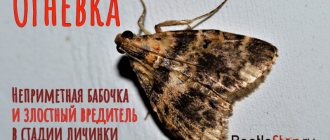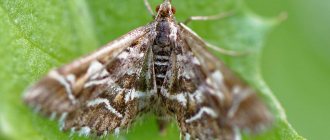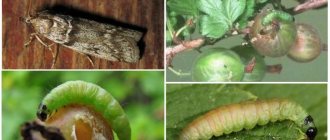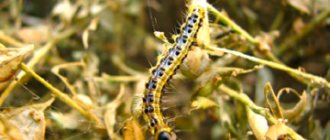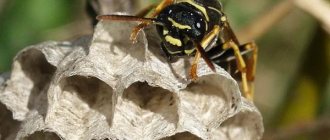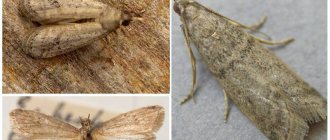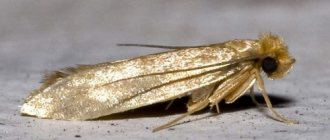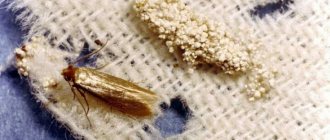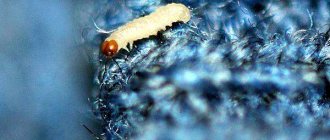Science is rapidly moving along the path of development, which makes it possible to create more and more new therapeutic drugs to combat various diseases. However, microorganisms harmful to humans quickly adapt to new drugs. Numerous laboratories around the world have to again look for ways to treat seemingly already defeated diseases.
Things are a little different when treating with folk remedies. Here the pathogens cannot yet decide to adapt and solve the problem of their survival. Why is this happening? No answer yet. Perhaps the rare use of such drugs does not allow pathogens to accumulate information and mutate. Perhaps nature itself has provided for everything so cleverly that, having placed natural remedies against bacteria and viruses in the hands of humans, it has blocked their ability to resist.
One of the most powerful folk remedies for the treatment of various diseases is bee moth tincture.
Who is the bee moth?
Beekeepers have one misfortune with which they constantly struggle. This is a wax moth. The name is collective for two species of these winged pests. Includes large (lat. Galleria mellonella) and small (Achroia grisella) wax moth. Both species are from the moth family (Pyralidae). That's why they are also called bee moths. There is also a poetic name - golden butterfly. That's what it was called in Ancient Greece.
It is not the butterfly itself that is harmful in the hive - it does not feed in this phase of development and lives off the nutrients accumulated by the larvae, but the worms that emerge from the eggs are a real scourge. Eggs are laid in the hive at night for several days in a row, after which the adult insect dies. After 5 days, larvae begin to emerge from the eggs. They are pale gray in color, about 1 mm long. In the first days of their existence, they eat honey and bee bread.
Important. If wax moth larvae are not dealt with, bee colonies weaken and die, or simply leave the hive.
As the caterpillars grow older, their diet expands - royal jelly, honeycomb and propolis are used. A few days before the transformation, moth caterpillars devour frames, insulating material, and even each other. Experiments have shown that these are the only representatives of the flora capable of eating and digesting polyethylene. During the experiments, holes appeared on the polyethylene film after just 20 minutes, and after 40 minutes the film almost completely disappeared. Caterpillars can digest chemically complex products such as wax and polyethylene with the help of special enzymes.
Interesting. The composition of the digestive enzymes of bee moths has not been fully studied. Various publications refer to the enzyme cerase. However, this enzyme is not mentioned in any scientific work. There is no chemical formula either.
After a month, having reached 2 cm in length, the caterpillar transforms into a cocoon. It is during this period, a few days before its transformation, that light yellow, sedentary and very voracious worms are collected, necessary for preparing ointments and tinctures at home.
Methods for neutralizing the pest
How to deal with the moth on currants and gooseberries worries every gardener who grows these useful crops. It is possible to defeat butterflies and their offspring if you use agrotechnical, preventive measures, and, if necessary, chemicals.
How to protect currant bushes from moth:
- Carry out deep digging of the soil in the autumn. In this way, it is possible to raise the pupae to the surface of the earth, and they die under unfavorable climatic winter conditions or from overdrying, which is the most critical for them.
- In late autumn, deep hilling of gooseberry and currant bushes is carried out to a height of 10 cm. After flowering in the spring, the plants should be unearthed. A high earthen barrier prevents moth moths from flying out of the ground after pupation.
- For the same purpose, mulch the soil near the bushes with peat or compost. A layer of organic components prevents individuals from getting out and significantly reduces their numbers.
- In the case when the moth is noticed on currant bushes, damaged bunches and berries are cut off and disposed of. You can destroy the pest by dousing it with boiling water.
- Regular pruning of bushes, thinning of thickets in berry gardens, fertilizing with fertilizers - such measures contribute not only to the growth and full development of bushes, but are also good prevention against moth and other pests. In a well-lit, ventilated place, insects appear much less often than in dense thickets.
Folk recipes
Folk remedies will help cope with the invasion of moths on currants:
- 5-6 days after the start of flowering, the plants are treated with pharmaceutical chamomile. To prepare the solution, pour 50 g of dried flowers into 5 liters of hot water and leave for 2-3 hours until completely cooled.
- To combat currant moth, a dry version of Dalmatian chamomile is also used - pyrethrum powder. The substance is dusted on bushes or sprayed through special bags or sieves. The procedure is repeated at intervals of 5-6 days.
On a note! In some recipes, the powder is mixed with road dust. However, there is not a single compelling argument that would justify the benefit of the original component.
- Ash is a universal folk remedy for a number of pests. It is used both in dry form and for preparing infusions. Processing is carried out during the ripening period of the berries. The third part of a 10-liter bucket is filled with wood ash. The remaining volume is filled with water and left in a dark place for 2-3 days.
- Mustard powder is used according to the same principle. The dry substance is sprayed onto the bushes and row spaces. The solution is prepared from 50 g of powder and 5 liters of boiling water. Leave for at least 48 hours. Then it is thoroughly stirred and used to treat currant bushes when the berries ripen.
- During flowering, plants are treated with tincture of wormwood or tobacco to repel moth butterflies. 200 g of tobacco dust is mixed with 5 liters of water. Leave for 2 days and add another 5 liters of liquid. To keep the product on the leaves, add 20 g of soap. It is best to use laundry or tar soap. They do not contain fragrances and prevent the development of fungi and the appearance of aphids.
On a note! It is advisable to treat currant bushes against adult moths in the evening, when the peak activity of flying individuals begins.
- Coniferous concentrate has proven itself to be effective against currant moth. It is used throughout the flowering phase at intervals of 6-7 days. The drug is a yellow powder. To repel butterflies, prepare a solution at the rate of 2 tablespoons per 10 liters of water. To destroy caterpillars, the concentration of the powder is doubled.
- To reduce the number of adult individuals during the summer, light traps are used. The cardboard is painted bright yellow, an adhesive composition is applied to it, and the primitive structure is placed near bushes or under lanterns.
- The use of elderberry against moths on currants can also bring results. Branches with elderberry inflorescences are placed in the center of the bush. Or prepare a solution for spraying from 10 g of crushed dried elderberry flowers and 1 liter of water. After the mixture has infused for 48 hours, it is filtered and used for its intended purpose.
Chemicals
The use and choice of insecticide to combat currant moth is determined by the phase of plant development:
- when it is early spring, the use of drugs begins even before flowering, use “Kinmiks”, “Iskra M”;
- after flowering, “Fufanon”, “Aktellik”, “Karbofos”, “Rovikurt” are suitable for spraying the bushes;
- During the period of development and ripening of berries, only products from the bioseries can be used: “Fitoverm”, “Lepidotsid”, “Agravertin”, “Bitoxibacillin”, “Iskra-bio”.
Tincture recipe
The tincture of wax moth larvae is mainly prepared directly in the apiary. You can also prepare it at home. You just need to purchase the larvae of this butterfly and ethyl alcohol.
The caterpillars must be large. Some believe that it is necessary to remove them from the hive before pupation, others - a few days before transformation, and still others say that the age of the larvae does not affect the medicinal properties of the tincture. Practice shows that they are all equally right - the product works for all options for selecting caterpillars.
The alcohol must be at least 70% strength, although many folk healers use simple Russian vodka.
Preparation is simple: moth caterpillars are placed in a glass or ceramic container and filled with alcohol, after which the container is tightly sealed. Depending on the concentration required to obtain the final product, the ratio of the weight of the larvae to the amount of alcohol also changes. With a ratio of 1 to 10 we get a 10% solution, and 1 to 4 – a 25% solution.
Contraindications, application features
Using wax moth tincture
You should pay attention to the fact that wax moth preparations contain beekeeping products. They are not recommended for pregnant and breastfeeding women, as well as those who are allergic to these components. It is strictly forbidden to take alcohol tincture during exacerbation of the following diseases:
- various forms of hepatitis;
- pancreatitis;
- peptic ulcer disease.
The composition of the fire requires caution and monitoring of the general condition of both adults and children. The tincture has great energetic power, so blood pressure may rise in people with sensitive vascular systems. In this case, it is necessary to reduce the dose of the drug or stop using it. It is best to gradually accustom the body to the tincture and take blood pressure lowering medications at the beginning of treatment. Moderate use of the drug stabilizes the condition over time.
On a note!
Before taking the tincture, you must remember that you should not drink alcohol during the treatment period, and people with low blood pressure should simultaneously use Leuzea decoction. Experts have different opinions on the question of whether it is possible to take a bee moth preparation with an antibiotic or not. Therefore, before starting to take the tincture, you should consult with your doctor, despite the fact that this remedy has virtually no contraindications.
Instructions for use
There is a general recommendation for using tincture of moth larvae. Should be taken either before meals, 30 minutes, or after meals, 1 hour. The extract should be shaken before use. Then there are three possible ways to receive it:
- Divorced. A few drops of tincture are mixed in 100 ml of water or tea (the dosage will be given below);
- Drops under the tongue and dissolves;
- It is taken similarly to Corvalol - from a spoon. After 1-2 minutes, swallow and wash down with water.
The dose depends on age, weight and type of disease, as well as the concentration of the drug.
When taking a 10% solution for preventive purposes to children under 12 years of age, the calculation is made in the ratio of 1 drop for every 12 kg of weight. For the first 2 days, the dose is reduced by 2 times. If no negative reactions of the body are observed, then proceed to the full volume. In adults it is 1 drop per 10 kg of weight. Taken once a day. Drink for 3 months, after which you should definitely take a break. The same applies to taking the extract as a medicine to treat various diseases.
Important. Traditional healers believe that it is prohibited to take a more concentrated solution before the age of 14.
It is recommended to treat diseases with a 20% composition. For tuberculosis, drink 6-10 drops for every 10 kg of weight, for cardiovascular diseases - 5-8, for male (prostate adenoma) and female (gynecological problems) diseases - 4-7, for bronchitis and asthma - also 4-7 drops. You should drink it in two doses: morning and evening.
An extract of a higher concentration should be converted into a 20% composition.
Indications for use of bee moth tincture
Allergies, heart disease, tuberculosis
You can often hear the question of what this tincture treats. The scope of use of the drug is quite wide. Experts claim and successfully prove in practice that it can be used in the treatment of a large number of diseases:
- tuberculosis, asthma, pneumonia, bronchitis, acute respiratory infections and acute respiratory viral infections;
- allergic reactions of various etiologies;
- diseases of the gastrointestinal tract, including ulcerative formations;
- parasite fire is used to prevent giardiasis and other worms;
- cardiosclerosis, angina pectoris, arrhythmia, heart disease, myocarditis, myocardial infarction;
- infertility, menopausal disorders, toxicosis, miscarriage;
- anemia and reduced immunity;
- blood clots;
- hypertension, atherosclerosis and other vascular diseases.
Review
We drink bee moth tincture with the whole family to strengthen the immune system. Over the past 2 years, we have not been sick even during epidemics!
Olga, Moscow
In addition to the diseases listed above, there are a large number of other problems for which the tincture is indicated.
Important!
When treating with moth, you must follow the instructions set out in the instructions for the drug and the doctor’s recommendations. In no case should you independently replace taking medications prescribed by a doctor with bee moth tincture.
Recipe for fire ointment
When treating cuts, scars and colloidal scars, moth ointment is used. The following ingredients are used to prepare it:
- moth caterpillars – 25 g;
- vodka – 50 ml;
- wax – 25 g;
- propolis – 25 g;
- calendula oil – 100 g;
- St. John's wort oil or Aekol preparation – 100 g.
Step-by-step instructions for preparing the ointment: the caterpillars are poured with vodka and stored in a dark, cool place for 5 days, after which they are thoroughly mixed with the other ingredients. The resulting paste-like mass is simmered in a water bath for 2 hours. Cool and place in pre-sterilized glass jars. Place in the refrigerator for storage.
Contraindications
There are general contraindications regarding the use of tincture of wax moth larvae. They provide for a ban on their reception:
- patients with hepatitis in the acute phase;
- persons with intolerance to bee products;
- persons coded for alcoholism;
- patients with pancreatitis.
The use of ointment is contraindicated in case of allergic reactions to wax and propolis.
Folk remedies made from moth larvae are a powerful biological preparation. It should be taken with caution so that the therapeutic effect does not turn into harm to health.
Composition and beneficial properties of wax moth tincture
Tincture of wax moth larvae
Tincture of bee moth is a brown-brown liquid. Its unique healing properties are due to the diet that the larva consumes during its development. The finished product contains:
- 20 out of 28 widely known amino acids (glycine, alanine, lysine, histidine, valine, serine and others);
- mono- and disaccharides;
- nucleotides;
- vital polyunsaturated fatty acids;
- biologically active compounds;
- potassium, calcium, zinc, molybdenum, phosphorus and other important trace elements;
- unique antibacterial enzymes cerase and protease, capable of dissolving wax;
- aromatic compounds.
Thanks to such a rich composition, moth tincture can have a positive effect on the human body. Its beneficial effects are as follows:
- the immune system is strengthened;
- mental and physical activity increases;
- sleep is normalized;
- the vitality of the body increases;
- the activity of the nervous system, as well as the heart and blood vessels, improves;
- blood cholesterol levels decrease;
- the body's resistance to infections increases;
- blood pressure is normalized and the risk of thrombosis is reduced;
- rapid tissue regeneration is observed and metabolic processes are normalized;
- the process of hematopoiesis and the formation of red blood cells is activated;
- liver tissue is restored in various forms of hepatitis.
The benefits of bee moth are confirmed by numerous positive reviews from patients. This indicates the high popularity and demand for the infusion, which can help cure many serious diseases.
Review
My mom has high blood pressure. You constantly have to take medications that do not eliminate the cause of poor health, but only temporarily alleviate it. One day I read about the beneficial properties of moth tincture and almost forced my mother to start taking it along with her medications. The effect exceeded all expectations! Blood pressure is now less of a concern, and even when the weather changes, mom feels good!
Inna, Gomel
